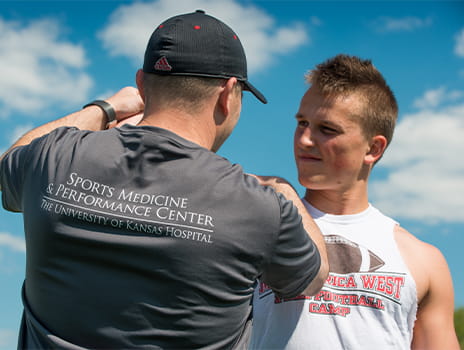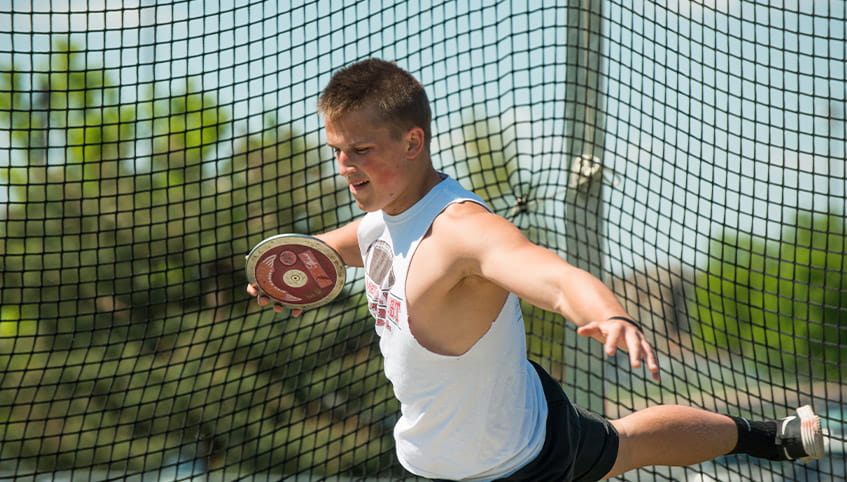Young Football Player Overcomes Shoulder Injury

In recognition of the Christmas and New Year’s holidays, some of The University of Kansas Health System’s offices will have modified hours on Thursday, December 25, and Thursday, January 1.

February 21, 2019
For most high school athletes, staying on the field to help your team win is all that matters. When Spencer Clayborn was a junior at Mill Valley High School, he was no different. So when he noticed his right shoulder popping out of its socket in the weight room and on the football field, he told no one.
"It just felt really loose and kept popping out of the socket. The weight room probably didn't help, but I didn't want that time out of the season," Spencer shrugs.
He kept his injury quiet throughout the football season while playing strong safety – a position reliant on hitting people hard with your shoulder. It wasn't until Sports Medicine and Performance Center professional Clint McAlister, athletic trainer for Mill Valley, witnessed the injury firsthand at the final regular-season home game that Spencer finally came to terms with the extent of the damage.
"I saw Spencer shove his dislocated shoulder back into its socket on the field after a rough hit. I could tell immediately it wasn't the first time," McAlister says.
McAlister insisted Spencer be taken out for the next play and evaluated on the sidelines. He determined Spencer had full range of motion and full strength and function, but suspected there might be something wrong with his labrum – cartilage that lines the shoulder socket – to cause it to keep dislocating.
Spencer was allowed to finish out the final game with a shoulder spica for support to prevent additional injury, but McAlister pushed for further evaluation. He knew ongoing dislocations of the shoulder can create a risk for neurological complications and permanent damage.
Sports medicine specialists evaluated Spencer the following week and ordered an MRI that showed a tear in the labrum of his right shoulder, as McAlister suspected. Spencer was given a choice, try to rehab his injured shoulder with physical therapy alone, or have surgery and stick to a strict recovery regimen for the summer.
"I didn't want that time off, but I knew surgery was my best option," Spencer says.
McAlister went to work preparing Spencer for the surgery and recovery."It's important to have a strong base before this type of surgery. It helps for a swift recovery," McAlister says. And he was right.
After working with McAlister on strength training for his right shoulder, Spencer received arthroscopic surgery. Arthroscopic is a minimally invasive type of surgery that inserts a tiny camera through 1 of 3 small incisions to repair the labrum. After a few weeks resting his shoulder in a sling, Spencer went through physical therapy twice a week with Martin Dolphino, physical therapy manager with The University of Kansas Health System. He also kept up his strengthening exercises with McAlister every day at school.
"It was important that we made sure he didn't push himself too hard, too fast, so the shoulder could properly heal first," says McAlister. "But he worked hard to get his strength back quickly, and ultimately it was one of the smoothest transitions I've ever seen."
Thanks to Spencer's hard work and the comprehensive care provided by the Sports Medicine and Performance Center's medical experts, Spencer got back to where he wanted to be: throwing discus on his track team, setting new personal bests in the weight room and preparing for another full football season.
All under the watchful eye of McAlister.

We offer a variety of appointment types. Learn more or call 913-588-1227 to schedule now.